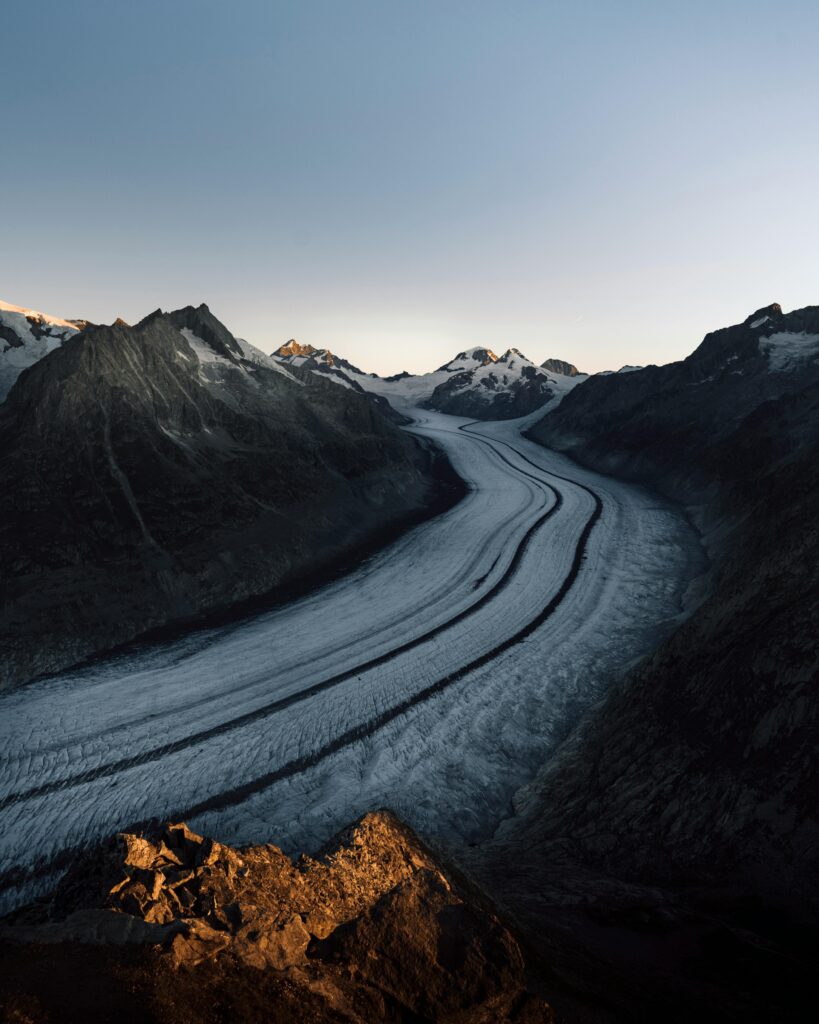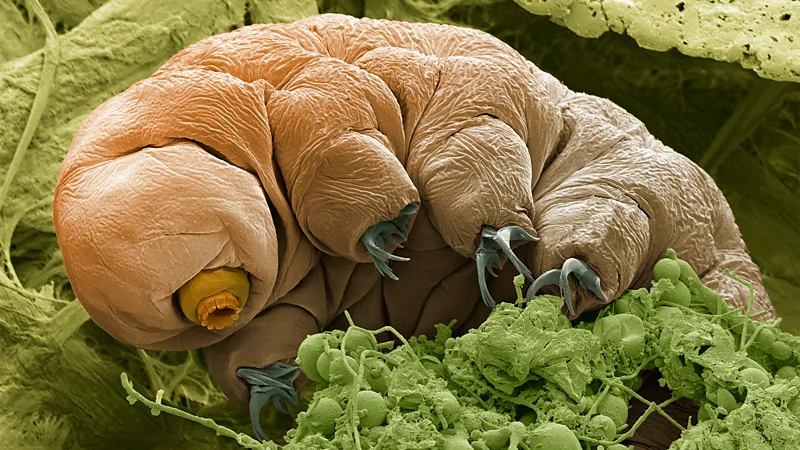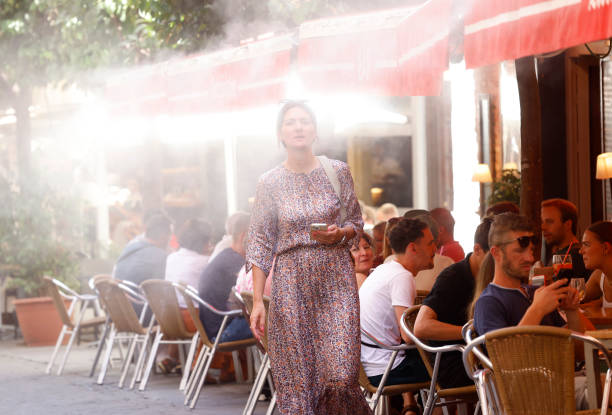Swiss glaciers melting at record speed are rewriting the story of the Alps — but not all of it is good news. As the Aletsch and Fiesch glaciers recede, they are exposing bare rock, creating new habitats, and shifting entire landscapes. At the same time, they are erasing centuries of culture, displacing unique species, and destabilizing mountain slopes.
From Ernen, one can see the deep gouge where the Fiesch glacier once cascaded toward the valley, a powerful river of ice that terrified locals in centuries past. Today, its absence inspires a different kind of fear. The glacier has melted out of sight, and its disappearance mirrors a global trend — glaciers from the Andes to the Himalayas are melting at unprecedented rates.
Aletsch: Europe’s Longest Glacier in Retreat
The Great Aletsch glacier, a UNESCO World Heritage Site, is still a breathtaking sight when viewed from the Moosfluh cable car. Yet, despite its majestic presence, it is receding by more than 50 meters every year. Clouds cast shifting shadows across the surface as waterfalls plunge into crevasses and bright blue meltwater pools appear where solid ice once lay.
Maurus Bamert, director of the Pro Natura Aletsch environmental education center, calls the area “special,” a place where harsh alpine conditions meet surprising biodiversity. The Aletsch once reached 200 meters thicker than today, acting like a frozen backbone that glued the surrounding hillsides together. As it thins, landslides, fissures, and route closures become common, forcing tourism groups to redesign hiking paths every year.

Life Thriving on the Ice
One of the most fascinating aspects of Swiss glaciers melting is the discovery of hidden life forms. Tiny springtails — also known as “glacier fleas” — hop across the snow’s crust. Scientists have recently identified five new species in the European Alps. The ice also supports algae, bacteria, fungi, spiders, and beetles, forming a unique ecosystem that has adapted to survive in extreme cold.
Tom Battin, a professor of environmental sciences at the Swiss Federal Institute of Technology in Lausanne, has studied these glacial ecosystems for years. He warns that once glaciers vanish, the rivers they feed could run dry, disrupting nutrient flows and endangering countless species downstream. Biofilms — invisible microbial layers that filter water — may disappear completely, setting off chain reactions that impact entire food webs.
A Landscape in Transition
The retreat of the glaciers does not just reveal bare rock. It also triggers a natural process of reforestation. Pioneer plants such as birch and larch quickly colonize the newly exposed soil, followed by alpine flowers like yellow saxifrage. Within a decade, what was once ice becomes lush with greenery. This transformation is striking — as Bamert puts it, walking down from the glacial edge into the forest is “like walking through time.”
But this change comes at a cost. Cold-climate specialists such as Alpine ibex and ptarmigan are pushed higher and higher up the slopes as their habitats shrink. Swiss pine trees, which rely on nutcracker birds for seed dispersal, are also migrating upward, threatening to break delicate ecological relationships.
Culture, Faith, and Memory
The cultural loss tied to Swiss glaciers melting is as significant as the ecological one. For centuries, villagers prayed for the glaciers to retreat, fearing they would swallow pastures and homes. Today, they pray for them to survive.
Each year, on July 31, residents gather for a pilgrimage from Fiesch church to the Mariahilf chapel, seeking divine intervention to save the glacier. A cross erected in 1818 still stands on a ridge above the valley — once a plea for protection from advancing ice, now a silent memorial to what is vanishing.
Local guides Martin and Dominik Nellen have spent their lives leading visitors across this changing landscape. Martin jokes that each year he must climb farther to reach the glacier’s edge. While there is sadness in watching the retreat, they take pride in educating tourists about the importance of glaciers and the fragile alpine environment they sustain.
What Is at Stake
Researchers like Francesco Ficetola, who leads the PrioritIce project, argue that glacial forelands are crucial for studying how new ecosystems emerge. Yet, as forests advance and unique glacier-edge species are crowded out, irreplaceable biodiversity may be lost.
Lee Brown, professor of aquatic sciences at Leeds University, says that losing these ecosystems will have cascading effects. “Without this biodiversity which you can’t see,” Battin warns, “all that other biodiversity that people care about might disappear.”
A Future Without Glaciers?
The fate of the Aletsch and Fiesch glaciers is uncertain, but projections show that many Alpine glaciers could disappear entirely by the end of the century if warming continues at the current pace. The loss would reshape not only the landscape but also water supplies, tourism economies, and cultural traditions tied to the Alps for generations.
For now, the Aletsch glacier still commands awe — a shimmering reminder of Earth’s ancient past. But each passing year, its surface shrinks, and its story grows more urgent. The challenge is clear: act fast enough to preserve what remains, or accept that this iconic ice giant will become just another memory carved into the rock of the Alps.
Source: The Guardian


